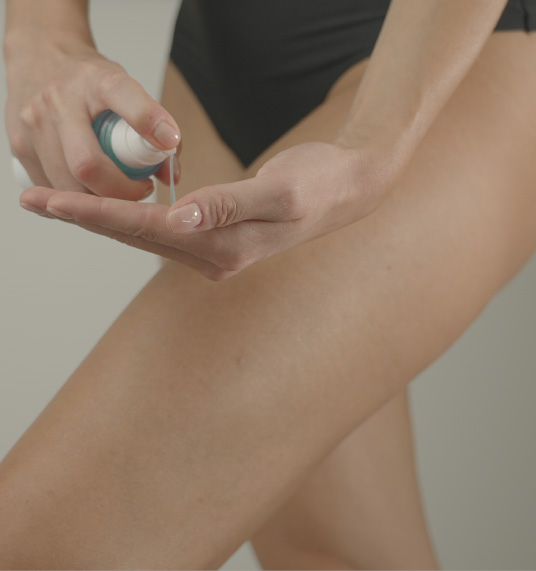SILICONES yes or no?
Use of SILICONE within COSMETICS

The reason for the massive use of silicones in cosmetics is linked to their chemical structure.
In recent years, the conscious purchase of beauty products has increased, especially due to the ease of acquiring information on the Internet.
To choose our own “cosmetic” we increasingly resort to reading the INCI (International Nomenclature of Cosmetic Ingredients) and its “decoding” using more or less correct tools from a technical point of view (e.g. “biodictionary”, online forum, blogger, etc.). If at first this attitude could be attributed more to a medium-low consumer target, now things are changing.
Many substances have ended up straight in the sights of consumers because consensus towards green, organic products is growing: petrolatum, silicones, parabens (indiscriminately) and SLES are experienced as undesirable elements in INCI.
WHAT ARE THEY?
Let’s discover their composition.
Silicones are polymers, i.e. chains of silicon-oxygen monomers. The bond between the various monomers – unlike what happens in vegetable oils where the Carbon-Carbon bond is present – is extremely flexible and elastic. The silicone therefore adapts perfectly to the surface on which it rests, creating a non-occlusive viscous-elastic film capable of immediately improving the appearance of the skin, a silky and sophisticated film to the touch. The chains can be more or less long, generating more or less volatile silicones. Functional groups can be “hooked” along the chain, which enrich and differentiate its properties, generating real “active excipients” for skin care.
The most recently produced silicones save production as they can be cold processed; furthermore, they are water-repellent and well-smoothening, making ointments and massage creams less greasy and sticky. Silicone emulsions do not turn rancid, do not irritate and are free of toxicity. For these reasons they can also be used in the baby skincare (cosmetics for children). Many cosmetic preparations have received notoriety and fortune thanks to the use of these products. In fact, once applied to the skin, they generate a pleasant sensation of “velvety skin” thanks to their chemical characteristics.
REASON WHY…
Some technical answers relating to the usual “reasons why” silicones are opposed
Is it true that…cosmetic silicones are derived from the combination of silicon and oil substances?
Silicones and petroleum jellies are different chemical substances. Let’s clarify this straight away. Petroleum jellies (also called hydrocarbons or mineral fats) are a class of chemical compounds derived from oil refining; among these, the best known is vaseline or liquid paraffin. Silicones, on the other hand, are semi-organic polymers that are obtained from silica.
Is it true that…silicones can cause dry skin, block pores and facilitate blackheads?
The opposite is true. Silicones can be used in the cosmetic field just as moisturizing agents. They act through an indirect hydration mechanism, i.e. they create a film on the surface of the skin, capable of retaining water, preventing excessive evaporation. However, being highly hydrating substances, they should not be used improperly or excessively because they could inhibit the physiological mechanism of skin hydration.
However, as regards open blackheads or comedones, they are due to the accumulation of sebum, keratin and microorganisms inside the hair follicles. Therefore, it is oily and non-silicone substances, such as hydrocarbons, which could block the pilosebaceous ostia and cause the appearance of comedones following their prolonged action.
However, even these latter substances are not to be avoided at all. They can bring benefits to the skin if used appropriately, i.e. when there is an indication and on the right type of skin.
Is it true that…silicones are not biodegradable and are highly polluting substances?
Silicone derivatives are not biodegradable. However, it is not necessarily the case that a cosmetic ingredient of plant origin is safer in terms of impact on the environment (from production to disposal). Exemplary is the case of zinc oxide, considered an “”ecological”” physical sun filter and better than so-called chemical filters. In terms of environmental impact on the marine system, for instance, it is a highly harmful substance. Therefore, the commitment on the part of the institutions to manage and monitor the environmental impact of all the different types of cosmetic products over time is fundamental. This is an approach that can be traced back not so much to the individual product, but to a company policy borne by those who formulate and manufacture.
An example for everyone: silicone is cold processed, with much lower energy impacts than vegetable oils.
And again: we avoid volatile silicones, whose release into the atmosphere is uncontrolled (cyclopentasixolane) in favor of non-volatile silicones, which can be removed using the hydraulic channels then destined for purifiers.